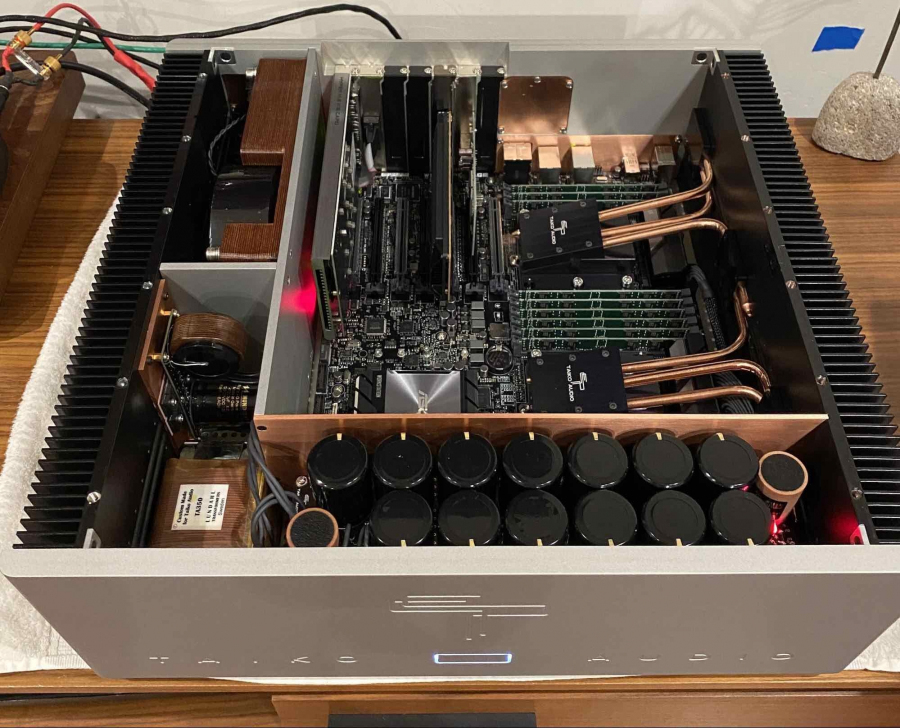Line noise is outside the storage environment, including all its electronics. The electronics of the storage affects only what is stored and retrieved inside the disk. As you yourself said, the 250MB of music is bit perfect.You are missing the point; no issue with the 250MB of music; it's a bit-perfect. However, when those 0 & 1 arrived at the DAC, they also carried line noise with them, and this noise affected DAC's ability to reconstruct the original signal. Where is that noise generated? It could be generated at the drive's storage/USB/power controller. Is storage in question here? No, and as I mentioned before, they are not inventing how data is stored in the storage medium—but employing different techniques at various stages, probably at the storage/USB/power controller level, to reduce this line noise. Cheers.
Agreed, the audio data that arrives at the DAC 'could' be corrupted. But saying there is some such thing as an 'audiophile' hard/SSD disk (with all its relevant electronics) that improves the music that is stored is certainly snake oil.
Cheers
Hence, it seems you are saying that Digital DOES Get corrupted, and 0s & 1s dont always remain the same ....I agree. That is why, a SOTA implementation tries to minimise if not eliminate errors, rather than correct them later.Hence, it seems you are saying that Digital DOES Get corrupted, and 0s & 1s dont always remain the same ....
I agree.
That is why, a SOTA implementation tries to minimise if not eliminate errors, rather than correct them later.
The Audiophile SSD seems to be an effort in minimising errors (I'm not saying its successful or otherwise) ,
However, the "Digital Is Perfect ... Forever" brigade and some others just don't appreciate or accept that there are second order (and less obvious to the partially informed) effects that affect Digital.
This sounds a lot like a scene from Jolly LLB (2) where the lawyer tries to make the honest cop sound like a terrorist irrespective of what he says.
Yes, 0's and 1's don't always remain the same. If and when they are corrupted, they are also corrected. So the chances of your getting incorrect data is negligible to none.
The Audiophile SSD seems to be an effort in minimising errors (I'm not saying its successful or otherwise)
Again, you are assuming that audio data is different from other data insofar as the storage is concerned. It is not. As far as the storage and retrieval of audio data or any other data is concerned there are no errors. You either get a whole block of data accurately, or you get a read (or write) error in which case that block is ignored. But to say the electronics of a storage can alter the stored contents (mostly for the better as claimed by the snake oil vendors) is too far fetched.
However, the "Digital Is Perfect ... Forever" brigade and some others just don't appreciate or accept that there are second order (and less obvious to the partially informed) effects that affect Digital.
Let me give you some simple to understand analogies here.
Analog audio storage is either LPs or tapes. In LPs, over time, the grooves are permanently altered by the needle. The weight and movement of the needle and the tone arm deepens and broadens the grooves. That means that the music you hear after say, an year, from the LP can never be the same as the 'original' sound. In tapes, the tapes using magnetic resonance to store and play the audio data. Since the magnet is a coating on the tape, and the tape is rubbed constantly against the read head, there is an unavoidable wear and tear on the magnetic coating. This means that the data stored on the magnet has been altered. This could affect the gain or the frequency of the audio signal, or both.
In the digital domain there is no physical wear and tear. The audio or any other data file stays the same for years. There is no loss whatsoever.
Digital systems may have 'second order' issues. But, my dear friend, analog systems have physical wear and tear. What are they? First order?
Cheers



